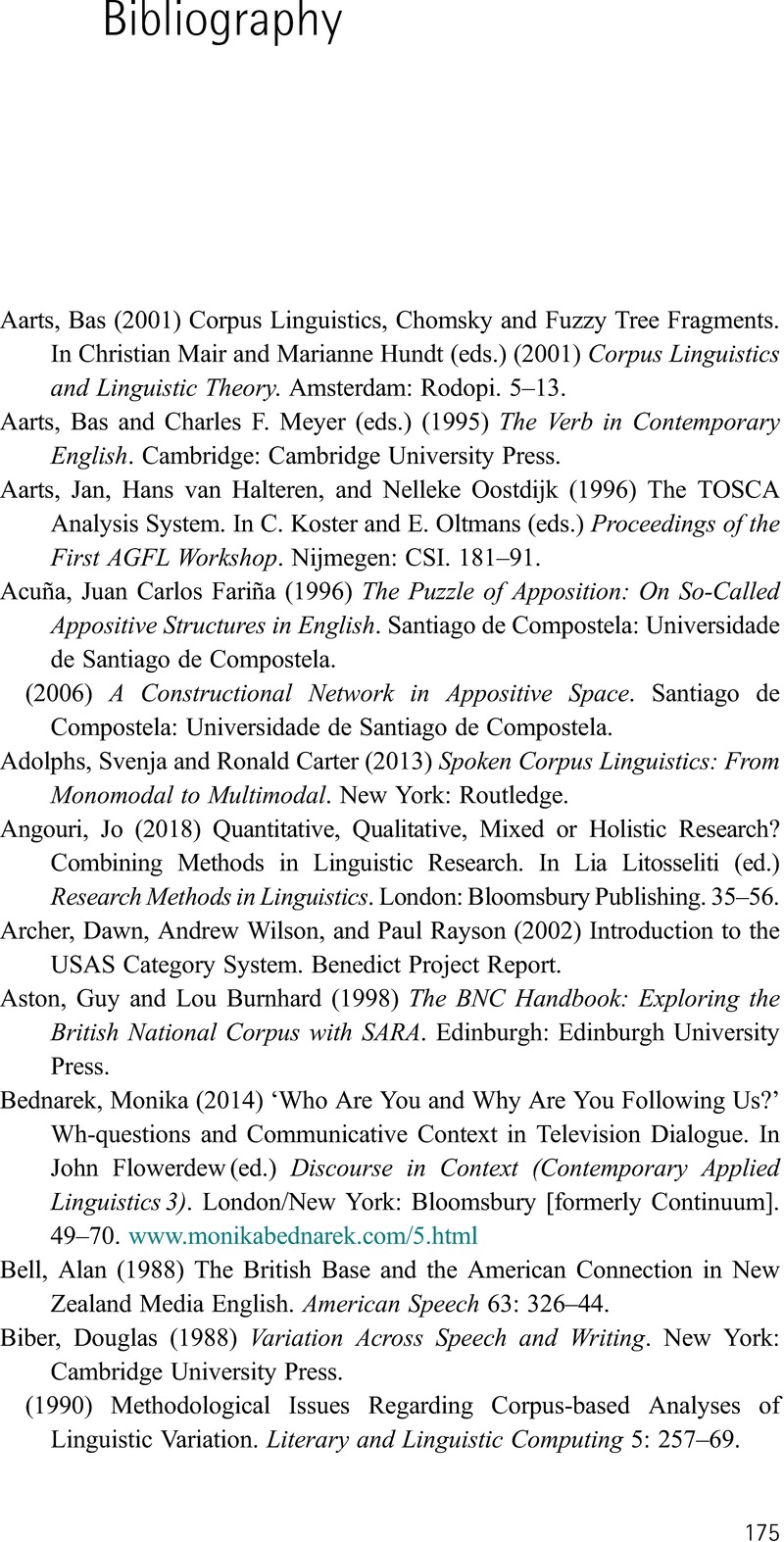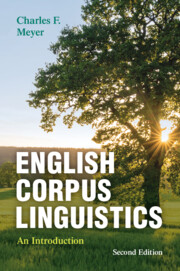Book contents
- English Corpus Linguistics
- English Corpus Linguistics
- Copyright page
- Contents
- Figures
- Tables
- Preface
- Acknowledgments
- 1 The Empirical Study of Language
- 2 Planning the Construction of a Corpus
- 3 Building and Annotating a Corpus
- 4 Analyzing a Corpus
- Concluding Remarks
- Discussion Topics
- Appendix: Corpora
- Bibliography
- Index
- References
Bibliography
Published online by Cambridge University Press: 15 June 2023
- English Corpus Linguistics
- English Corpus Linguistics
- Copyright page
- Contents
- Figures
- Tables
- Preface
- Acknowledgments
- 1 The Empirical Study of Language
- 2 Planning the Construction of a Corpus
- 3 Building and Annotating a Corpus
- 4 Analyzing a Corpus
- Concluding Remarks
- Discussion Topics
- Appendix: Corpora
- Bibliography
- Index
- References
Summary

- Type
- Chapter
- Information
- English Corpus LinguisticsAn Introduction, pp. 175 - 185Publisher: Cambridge University PressPrint publication year: 2023



